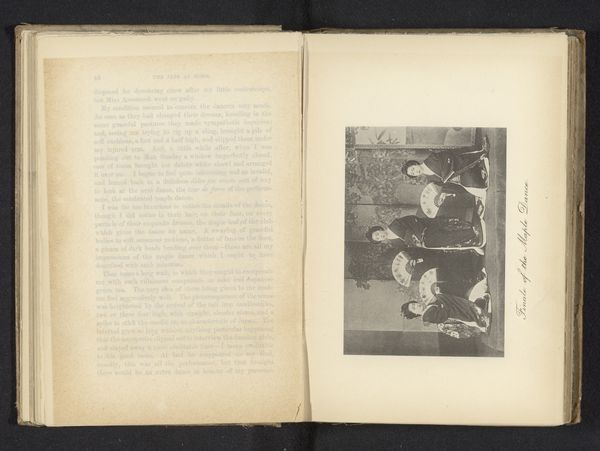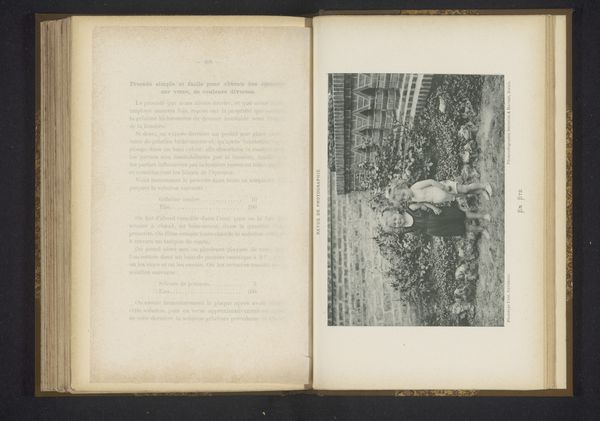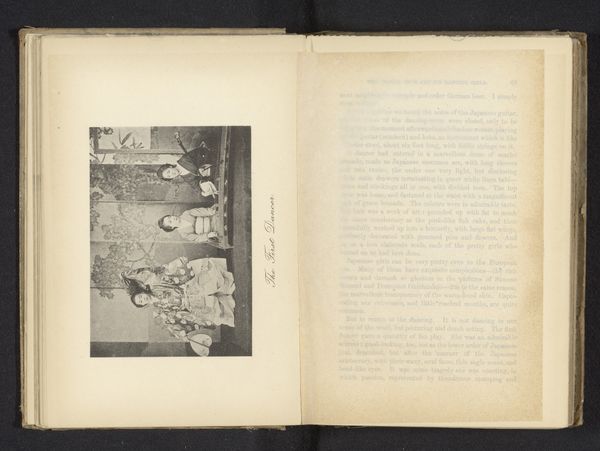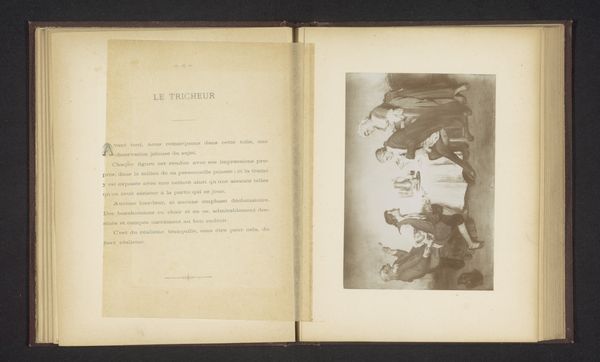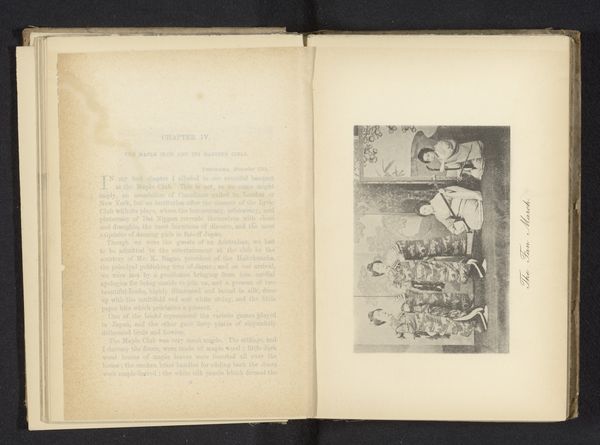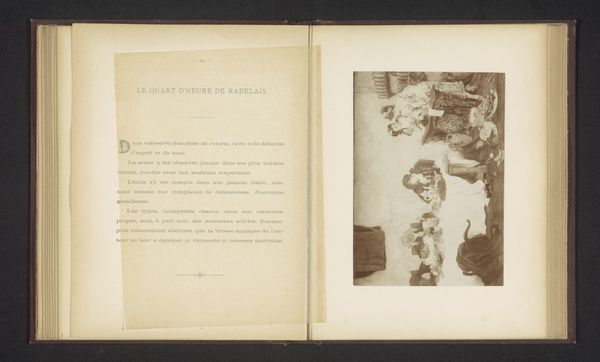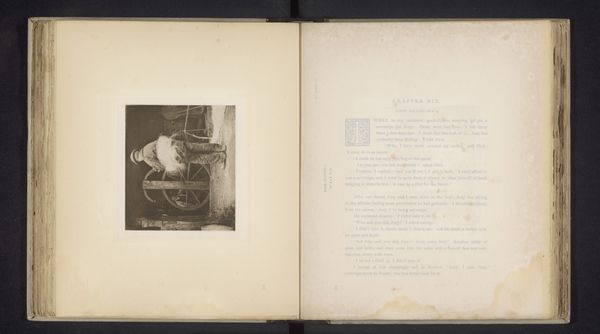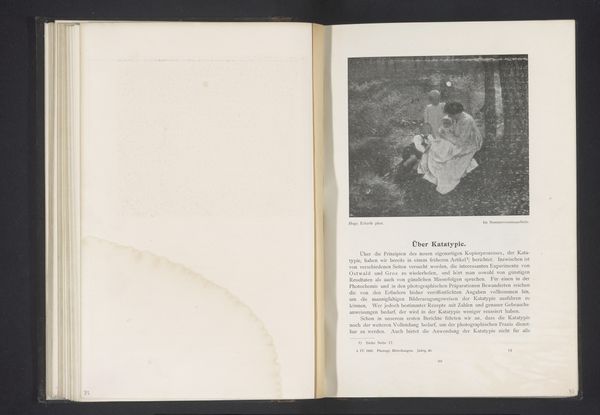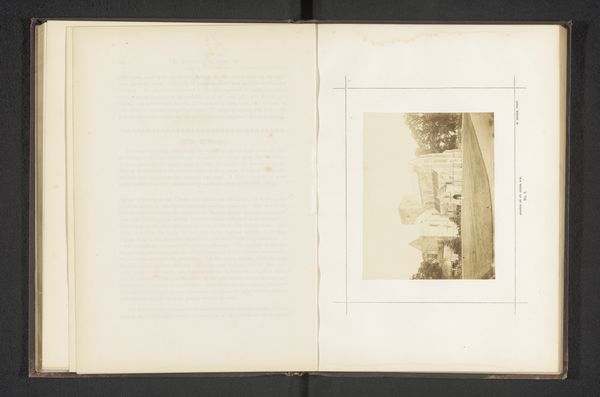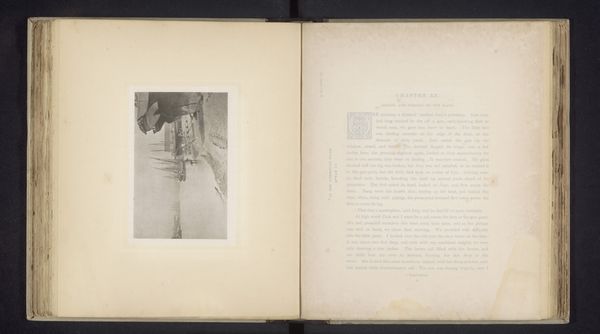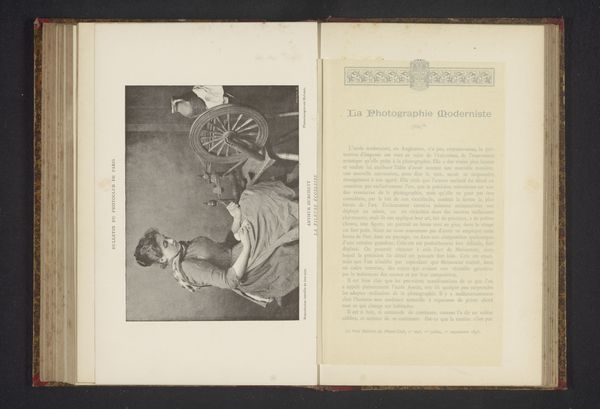
photography
#
portrait
#
photography
#
watercolor
#
realism
Dimensions: height 146 mm, width 105 mm
Copyright: Rijks Museum: Open Domain
Curator: Here we have "Portret van een onbekend meisje dat in een boek schrijft" which translates to "Portrait of an unknown girl writing in a book", created by E. Hauser before 1899, and realized with photography. What is your first impression? Editor: Immediately, I see a quiet intimacy. There is an elegance, but it is almost entirely visual; you feel her distance as she exists separately on the opposite page from printed text. It's not traditionally romantic or classically heroic, yet its softness pulls the viewer close. Curator: Softness, indeed. Consider the tonal range, its limited palette and sharp contrast. Hauser meticulously used the book spread as a pictorial frame to focus your eye on texture, which creates the image's balance. Observe how that high contrast delineates the subject and defines every crease in her dress, capturing form and shape that invite you to appreciate depth and volume as the very subject. Editor: Certainly, I appreciate your emphasis on compositional elements. Though the subject’s pose is deliberate, notice the child herself is "unkown," while her intellectual actions appear unexamined. Where are we in that context? I am also left to ponder if the page behind her references cultural production, considering access to literacy was profoundly different across gender, race, and class at the end of the nineteenth century. Curator: That's a point. If we attend to form, we realize that a narrative structure and thematic richness also exist, adding multiple points of interest. How do those aesthetic aspects interact? Is there a counter-reading within the same visual data? I feel there is space for multiple conclusions. Editor: Right! The piece speaks to how personal stories connect with societal narratives to either undermine or support historical hierarchies, thus producing counter-narratives. That intersection may spark new interpretive insights from contemporary audiences in their evaluation. Curator: I feel we've offered everyone ways to explore these nuanced tensions. Editor: Precisely; new ways of understanding what this photographic composition has to reveal in present contexts.
Comments
No comments
Be the first to comment and join the conversation on the ultimate creative platform.
